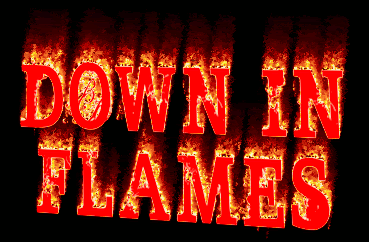How to Know When a Stock Market Bubble is about to Pop
Part 4 - Mastering the Psychology of the Stock Market Series
Our Mastering the Psychology of the Stock Market series concludes as we take a closer look at investing bubbles.
Specifically, we're going see why they will always exist, why they're so hard to identify in advance, and how to know when they're living on borrowed time and are about to pop.
But before we get to that, let's do a quick review of everything we've covered in this Stock Market Psychology series so far . . .
Recap
So far in this series on Mastering the Psychology of the Stock Market, we've:
- Refuted the Efficient Market Hypothesis (EMH) by demonstrating the myriad ways in which Mr. Market is frequently irrational
- Had some fun at the expense of so-called Smart Money and showed how these "sophisticated" institutional investors are generally terrible at investing but terrific at collecting fees
- Examined the psychologically fascinating - and critical to understand - repeating history of secular bull markets and secular bear markets
In this concluding article, we're going to dive in and a closer look at stock market bubbles (and investing bubbles in general) - why they'll always exist, why they're so hard to identify beforehand, and how to know when they're about to pop.
#1 - Why Bubbles Will Always Exist
I ended the previous article in this series - on the psychology of secular markets - with the claim that investing bubbles are inevitable and that they'll always exist.
And given the track record of bubbles and the history of alternating secular bull and secular bear markets, it's a safe bet that our propensity to create investing bubbles isn't going away.
This is deeply ingrained psychology - and it never really changes.
Although that doesn't make it any less mysterious or weird.
Is it greed? Fear of missing out? Groupthink and conformity? Something else?
Who knows all the ins and outs of why it exists? What's most important is simply recognizing that it's there.
And bubbles can rise up anywhere - individual stocks, specific sectors, the entire market
They're not just limited to the stock market.
The worlds of real estate and commodities are just as susceptible to ridiculous overvaluation as is the world of stock equities.
In fact, history is littered with the carcasses of long forgotten bubbles.
We remember recent real estate bubble and the really famous ones like Tulip Mania, the dot.com boom and bust, and the bubble that capped the Roaring 20s, led to the 1929 stock market crash, and ushered in the Great Depression.
But who remembers the Nifty Fifty (high quality large caps) from the '60s and 70s that soared and soared and then crashed and burned?
From the USA Today article, "Remember the Nifty Fifty?"
Deemed "one-decision" stocks, the Nifty Fifty were meant to be bought and not sold. Unlike typical "buy-and-hold" stocks such as slow-growing but generous dividend-paying utility-company shares, investors were willing to pay unbounded prices for a piece of the Nifty Fifty pie.
That optimism was visible in a key measure of the stocks' value: the price-to-earnings ratio or P/E – the price-per-share divided by the company's annual earnings-per-share. By 1972 when the S&P 500 Index's P/E stood at a then lofty 19, the Nifty Fifty's average P/E was more than twice that at 42. Among the most inflated were Polaroid with a P/E of 91; McDonald's, 86; Walt Disney, 82; and Avon Products, 65.
Along came the stock market collapse of 1973-74, where the Dow Jones Industrial Average fell 45% in just two years. It was driven by the end of the Bretton Woods monetary system, soaring inflation and the first of the 1970s oil crises. As a Forbes columnist described it, the Nifty Fifty "were taken out and shot one by one." From their respective highs, for instance, Xerox fell 71 percent, Avon 86 percent and Polaroid 91 percent.
Jim Cramer's famous line is that there's always a bull market somewhere.
I think you could just as easily make the case that there's always a bubble - or one forming - somewhere.
#2 - Why Bubbles Are So Hard to See in Real Time

Bubble spotting can be tricky.
It's not that they're impossible to recognize in advance.
But those who rightly see them are often way, way early in pointing them out.
Even worse, there are a lot of - and I say this as a term of endearment - crackpots who see bubbles everywhere.
In fact, there's also often just as much psychology at work in those who perpetually pound the doomsday table as there is in those caught up in the mania of the bubble.
There are famous figures who have made an entire career about predicting the imminent crash (and I won't reinforce their brand or manufactured authority by listing them here).
Just because you're a perma-bear doesn't mean you're a visionary and if you're only "right" once every couple of decades, you're not exactly insightful or helping anyone. You're just making noise.
Let's not forget the fascinating psychological phenomenon of denial.
Following the March 2009 bottom in the stock market, we heard for YEARS AND YEARS how the subsequent rally was merely a "bear market rally" and that we would trade even lower.
(Denial of denial is also a lot of fun as more and more people who used to subscribe to those views now deny they were ever that bearish.)
So true bubble visionaries - with a good sense of timing - are hard to come by.
But even the crackpots and true visionaries combined are vastly outnumbered by the Bubble Army itself
During the bubble making process, the largest group of investors by far are those who are actually inflating the bubble.
And they certainly don't recognize their creation for what it is.
This is key - bubbles require the vast majority of individuals not seeing a bubble as a bubble but rather as something natural.
It's not a bubble, it's the "new normal."
Or, it's a "no brainer" investment (which is actually the most accurate description ever - although not in the way the user intends).
I have a great friend originally from North Dakota with deep roots in the community even though he wasn't living there at the time.
During the height of the energy boom (there was no Great Recession in North Dakota), he relayed a couple of powerful anecdotal stories.
One involved work jeans being in such demand that a local store (Walmart?) wouldn't even bother with stocking the jeans on shelves (since they couldn't keep the shelves stocked anyway).
Rather, they would just forklift the pallet out in the middle of an aisle and let the oil service workers swarm through the entire shipment of jeans themselves.
The second story involved a local McDonald's which simply couldn't find enough workers to operate the store full time - so they were only open half a day.
(As this story in The Atlantic on the North Dakota energy boom and bust points out, high school grads were hauling in 6-figure incomes.)
If you get nothing else from this series, get this - when you start hearing stories like these, that's not a time to get in. That's a time to start thinking about getting out.
Bubbles simply can't exist without the crowd being blind to them in the first place
For some, that's due to inexperience, and for others, it's due to something else as the "it's different this time" mentality kicks in.
The questions that go without saying? Those are the very assumptions we should be questioning the hardest.
As I've been saying to my (now) 12 year old for years - the easiest person to lie to is yourself.
#3 - How to Know When a Bubble is About to Pop

OK - enough with the philosophy.
How about some good, old fashioned pragmatism?
Simply being correct - rather than simply being a crackpot - and identifying a bubble, or a bubble in the making, is not enough.
That's because, by definition, bubbles can (and often do) exist for a LONG time before they burst.
So what good does it do you to correctly identify a bubble YEARS in advance?
Shorting the bubble, or in some other way attempting to exploit the inevitable crash, while the bubble continues to expand, is financial suicide.
As the famous adage goes, "The stock market can remain irrational longer than you can remain solvent."
And just sitting on the sidelines - for years - with a sign that says "The End is Near" doesn't exactly make you look like a genius.
Being too early is often indistinguishable from being wrong - you can pat yourself on the back for being right, but unless you also get the timing relatively right, you're still wrong.
Nailing the Timing of the Inevitable Crash
Again, these bubbles can be in individual stocks or sectors.
They don't have to encompass the entire stock market - although as our long and rich history of alternating secular bull and secular bear markets suggest, it's only a matter of time before the next day of reckoning.
Regardless of the bubble in question, the most pressing question is this - how do you know when that $%#%er is going to pop?
Nailing the precise top and subsequent moment when the collapse begins is nearly impossible, of course, and a few percentage points here or there isn't going to make that big of a difference.
When it comes to a seismic shift in an asset (or group of assets), it's the big picture that counts.
In other words, what would be most helpful is knowing when something - due to all the messy human psychology involved - is, in the near term, susceptible to losing two-thirds of its mania-inflated value.
It may be hard to quantify, but there are usually some telltale signs that indicate the end is near:
>> There's no one left to join the party
Here's a helpful way of viewing bubbles:
Bubbles are not made of over inflated prices or values.
Bubbles are comprised of people - and lots of them as they crowd into a space that's way too small for their number.

But as long as new people are cramming in, the crowd will continue finding a way to accommodate the new arrivals.
It's at the point when the new arrivals slow to a trickle, or stop altogether, that everything is on the verge of collapse.
That's just basic supply and demand.
When demand finally slows down or even stops, it doesn't take much selling at all - just some basic profit taking by a few at first - to begin the inevitable reversal process.
Kind of like a roller coaster at its peak point - the car doesn't reach the zenith and then immediately plummet lower.
There's a moment when it seems to hang in the balance and then slowly teeters over the edge before the bottom drops out.
>> Capitulation

We normally associate capitulation with stock market bottoms as the final wave of sellers throw in the towel and finally bail on a stock (or the stock market in general).
But capitulations occur on the upside, too.
Otherwise sensible, valuation-minded investors can also throw in the towel.
Maybe this really is the new normal, they think.
Maybe the group think of the herd finally just wears them down.
>> The Final Flurry
Often, but not always, there may also be a final flurry, a final parabolic move, and there's no better way of saying it - one last orgasmic move higher as passions completely take over.

THAT'S when you know the party is over.
But unfortunately, there's not going to be a lot of time for post-coital bliss and pillow talk.
Because it's time to get dressed and get out ASAP - whether you realize it or not, the house is now on fire.
Tweet
Follow @LeveragedInvest
HOME : Stock Option Analysis and Articles : How to Know When a Stock Bubble is About to Pop (Mastering the Psychology of the Stock Market Series - Part 4)

>> The Complete Guide to Selling Puts (Best Put Selling Resource on the Web)
>> Constructing Multiple Lines of Defense Into Your Put Selling Trades (How to Safely Sell Options for High Yield Income in Any Market Environment)
Option Trading and Duration Series
Part 1 >> Best Durations When Buying or Selling Options (Updated Article)
Part 2 >> The Sweet Spot Expiration Date When Selling Options
Part 3 >> Pros and Cons of Selling Weekly Options
>> Comprehensive Guide to Selling Puts on Margin
Selling Puts and Earnings Series
>> Why Bear Markets Don't Matter When You Own a Great Business (Updated Article)
Part 1 >> Selling Puts Into Earnings
Part 2 >> How to Use Earnings to Manage and Repair a Short Put Trade
Part 3 >> Selling Puts and the Earnings Calendar (Weird but Important Tip)
Mastering the Psychology of the Stock Market Series
Part 1 >> Myth of Efficient Market Hypothesis
Part 2 >> Myth of Smart Money
Part 3 >> Psychology of Secular Bull and Bear Markets
Part 4 >> How to Know When a Stock Bubble is About to Pop


